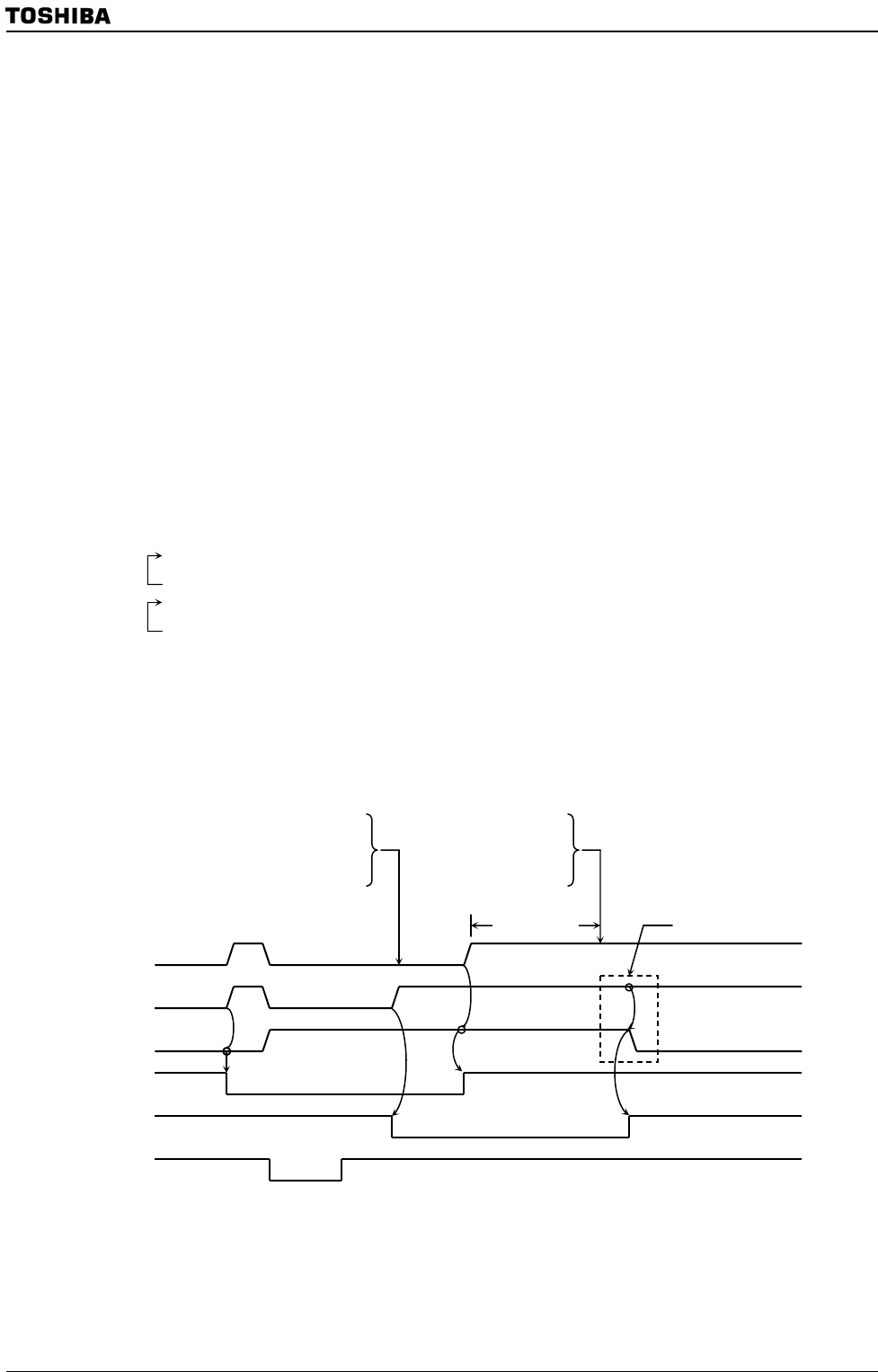
TMP92CZ26A
92CZ26A-365
(5) Restart
Restart is used during data transfer between a master device and a slave device to
change the data transfer direction.
The following description explains how to restart when the TMP92CZ26A is in
Master Mode.
Clear SBICR2<MST, TRX, and BB> to 0 and set SBICR2<PIN> to 1 to release the
bus. The SDA line remains High and the SCL pin is released. Since a stop condition
has not been generated on the bus, other devices assume the bus to be in busy state.
And confirm SCL pin, that SCL pin is released and become bus-free state by
SBISR<BB> = “0” or signal level “1” of SCL pin in port mode. Check the <LRB> until it
becomes 1 to check that the SCL line on a bus is not pulled down to the low-level by
other devices. After confirming that the bus remains in a free state, generate a start
condition using the procedure described in (2).
In order to satisfy the set-up time requirements when restarting, take at least 4.7 μs of
waiting time by software from the time of restarting to confirm that the bus is free
until the time to generate the start condition.
7 6 5 4 3 2 1 0
SBICR2
←
0 0 0 1 1 0 0 0 Release the bus
if SBISR<BB> ≠ 0 Check if SCL pin is released.
Then
if SBISR<LRB> ≠ 1 Check if SCL pin of other device is “L” level.
Then
4.7 μs Wait
SBICR1
←
X X X 1 X X X X Set acknowledgement mode.
SBIDBR
←
X X X X X X X X Set the slave address and direction bit.
SBICR2
←
1 1 1 1 1 0 0 0 Generate start condition.
Note: X: Don’t care
Figure 3.15.20 Timing chart for generate restart
Note: Don’t write <MST> = “0”, when <MST> = “0” condition. (Cannot be restarted)
Start condition
<LRB>
SCL line
Internal SCL
output
SDA line
<PIN>
4.7 μs (Min)
<BB>
“0” → <MST>
“0” → <TRX>
“0” → <BB>
“1” → <PIN>
“1” → <MST>
“1” → <TRX>
“1” → <BB>
“1” → <PIN>
9


















